The origin of Motion Design studios, as told by their founders.
Co-written by Perception founders Jeremy Lasky and Danny Gonzalez.
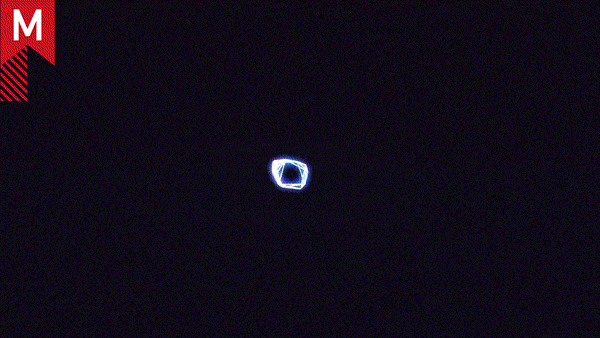
Editor’s Note: In this series, we’ll be hearing from the founders of creative studios recounting their tales of how it all began. Each studio and founder are at different stages in their journey, but whether they’re 3, 10, 15, or 20 years in the making, these candid accounts offer unique insights into what it takes to own and operate a business in the world of Motion Design.
From deciding to go it alone to growing a team, to riding the unpredictable wave of technology, to evolving through a pandemic and gearing up for the future, these studios all have inspiring stories to tell.
When it comes to telling the story of Perception, it’s hard to know where to start. But after 20 years of operating our Motion Design and visual effects company, there is one thing we can say for certain, we never planned on going into an industry as niche and specialized as this.
Danny, Perception’s co-founder, and I came from different places, we went to different schools, and both enrolled in college majors that didn’t even involve Motion Design.
Perhaps then, we should begin there, before Perception existed and well before we even had any idea of what we wanted to do…
Jeremy growing up
I was always drawing as a kid and was labeled ‘the class artist’ in grade school. It certainly helped that my dad was a high school art teacher in Brooklyn. From a very early age, I would sit in on his Saturday morning art workshops for high schoolers and learn drawing techniques and principles far beyond my years.
I knew I wanted to do something with art but had no idea what the career path looked like. I was always told there were only two ways to go, “teach art like your father or become an architect.” My dad often expressed to me that there were other things he regretted not pursuing. Though he loved teaching and was gifted at it, he never made the living he’d hoped, and subsequently, my parents were constantly stressed about finances. I decided early on that I wanted something more.
So, I took the second option and began studying architecture at Carnegie Mellon. At the time, all the professors seemed to be recent grads that couldn’t find a job and were teaching instead; not something a budding young architecture student wanted to see. It was a pretty dismal market back then.
I had been interning at a graphic design firm in SoHo during the summers of my junior and senior years in high school, art directing high school magazines, creating logos/flyers for local businesses, etc. During that time, I gained a tremendous amount of fluency in desktop publishing/graphic design software – Quark XPress, Pagemaker, Illustrator, Photoshop, Freehand. These tools came naturally to me back then, which was pretty uncommon and specialized for a kid in the late ‘80s/early ‘90s.
With my growing interest in graphic design and my waning interest in architecture, I decided to reapply to Carnegie Mellon’s graphic design program before finishing my first year of college. I got accepted but had to start over again as a freshman.
During my third year, a professor showed me an archive he’d been keeping of classic title sequences – and this is at a time where titles were hardly ever talked about, studied, or celebrated by the mainstream. Included in the archive tapes was the work of R/Greenberg Associates (R/GA).
The Superman title sequence by R/Greenberg Associates (RG/A)
I loved movies as a kid. I loved filmmaking, learning about how they were made, and even drawing my own animated cartoons. However, I never really imagined that I could have a career in film – it was always just for fun. But then I saw those tapes, title sequences marrying beautiful graphic design with deft filmmaking. It was a whole new world of possibility. Graphic design that moved that could tell stories – that was it for me.
Danny growing up
Like Jeremy, I also discovered the visual effects field in college – somewhat by accident. While on track to get my business degree to eventually take over the family restaurant, I needed to take an additional class in my last year at St. John’s University..
St. John’s offered an ‘Introduction to Visual Effects’ course. It focused mainly on stop motion, basic animation, and simple visual effects. I was always intrigued with the VFX in movies, and when the opportunity came up, I thought it would be an interesting subject to fill up some extra credits. However, throughout my time of taking the class, VFX became a real passion for me. The class was on Friday nights, and when it finished, I went to DJ at different clubs in New York City. I decided to pursue it after graduation.
Truthfully, my father was a bit angry at the sudden switch in interest, but once he saw the passion I had for the VFX world, he knew there was no changing my mind.
So, how did two guys who went to different universities and didn’t know each other form a company like Perception?
Over to you, Jeremy…
It started with…

We both got jobs at separate points in time at R/GA, working on broadcast, promotions, and commercials. Danny was working in the digital post department, while I was stationed in the design department. Danny had been working there for a while by the time I joined the R/GA team, and we met in passing in the hallway on my first day as I was being shown around the facility.
Our departments frequently worked together, so Danny and I were paired up on many projects. He would manipulate elements I designed, editing and layering in various effects and finishing techniques. We were a good team, and we liked what we did together. Danny grew up in Queens, and I’m from Brooklyn, so there was an immediate bond since we shared similar native New Yorker attitudes, aggravations, and annoyances!
R/GA was a dream company for us to work for – it was like a piece of Hollywood that was nestled right here in Hell’s Kitchen. Working at R/GA was way more than a job for us; it became somewhat of a graduate school with everything we were learning; we gained so many valuable lessons and techniques.
However, the times were changing, which meant R/GA had to change with them. In the late ‘90s, everyone was moving into a more digital era, where “interactive” was the new buzzword, and web design was taking over. With such a big drive to create web pages and websites, R/GA began moving away from broadcast. Unfortunately, that meant that the work we did for film and television was no longer a focus, and consequently, Danny’s digital post department and the 3D department were winding down. All of the ‘studio’ designers that were left would be transitioned solely into website and interactive design.
Inception
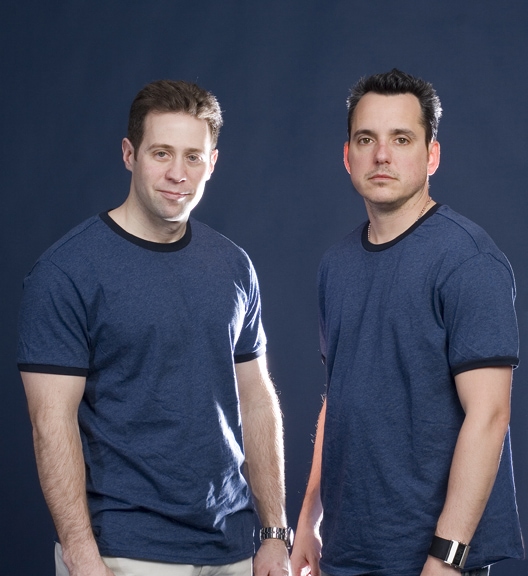
Jeremy Lasky (left) and Danny Gonzalez (Right) circa 2006.
We didn’t let that stop us, though. For a while, we discussed what it would be like to run our own company, and we were sure we had what it took to make it happen. Technology had improved to such an extent that high-end graphics and editing were now entirely achievable on desktop computers. Given the affordability of these digital tools, our confidence was growing that we could be of great value and service to ad agencies and broadcast clients for their design, VFX, and editing needs. We knew what we wanted, we knew the work we wanted to do, and we were committed to it. The idea of Perception had started to form.
We had our reservations, though. It was 2001, just after 9/11, and NYC was not in the best spot. The economy was struggling, and no one was sure about the future of visual effects and Motion Design. In addition, Danny’s wife was pregnant, and taking this leap would be a big risk. We had a history of good work, but there was no guarantee of getting clients.
As we thought about it, we couldn’t let this idea go to waste. We had so much we wanted to do and so much energy to do it that we took the calculated risk and started the company. It was just the two of us, some desktop computers, and a passion for making our dream work.
Perception
In November of 2001, a former colleague from R/GA invested in us and lent us a space in his photo retouching studio on 22nd street; this would be our first studio. Well, we use the term “studio” loosely. It was a tiny conference room with a “desk” fashioned from an old door propped on its side with four legs underneath; this became our main editing table. While the space was small and we didn’t have the kind of high-end equipment we had used at RG/A, it was exactly what we needed to start Perception.
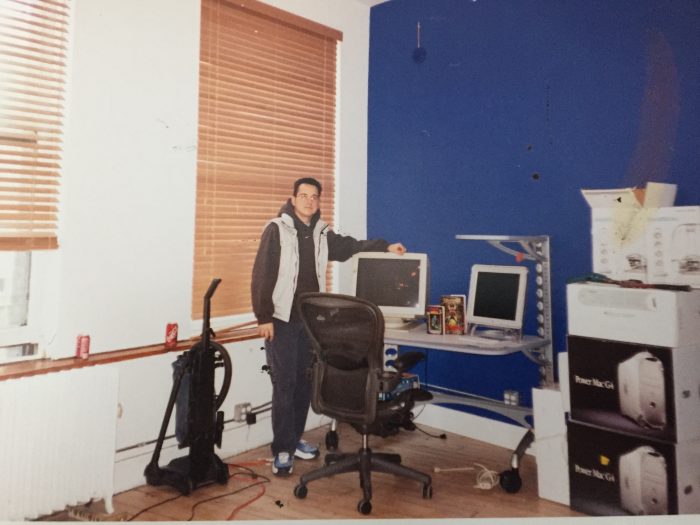
Danny Gonzalez in the first Perception office.
Once we were settled, we began reaching out to potential clients, calling them up and introducing ourselves, knocking on doors (literally), messengering and overnighting VHS copies of our reel, trying to pitch our company to anyone we could think of.
We got hung up on. A lot. And that’s a side of things that people don’t hear about too often. One of the greatest struggles we faced was getting potential clients to simply talk to us. Sometimes, we swear we can still hear the click of the phone hanging up on us.
Unperturbed, we kept pushing. We kept calling. We kept getting our name out there. We worked incredibly hard to make the company succeed, and we weren’t going to let ourselves get discouraged. We had seen so many companies start up, seek out work, and shut down just a few months later. Perception was not going to be that company.
One of our earliest goals was to get involved in feature film work with title sequences, but there was certainly no direct or easy path to that. We began by looking for small work with ad agencies and broadcast networks. They were mostly one-off projects, but they provided us with a foundation of work by Perception – to add to the work we both did at R/GA – and the drive to shoot even higher.
While working on these broadcast pieces, we gradually drafted up a dream list of clients. We knew who we wanted, but how were we going to ever get in front of them? We decided to pursue sales representation since that’s what other studios at the time were doing.
We took inspiration from other successful studios that had been around a while to help with making decisions like that. Neither of us had any background in the fine details of business or sales, so by necessity, we took on roles that were foreign to us. We figured everything out together on the fly, learning by trial and error and seeing what resulted in the greatest success. We were just two creatives at heart, but we were turning ourselves into professional business people through hands-on experience.
The Big Break
Our first big break came in the summer of 2002. The sales rep we had teamed up with managed to get us an amazing opportunity. It turned out he had a good relationship with one of the creatives at HBO, and we were offered the chance to pitch for a national marketing campaign for a show called The Sopranos.
We met with the HBO team, and they immediately loved the passion and the variety of visual treatments we came up with. We also pitched complete scripts and music for each idea. Whenever we have an opportunity like this, we go all out. If we don’t think we can give 150% to a project, we will politely decline.
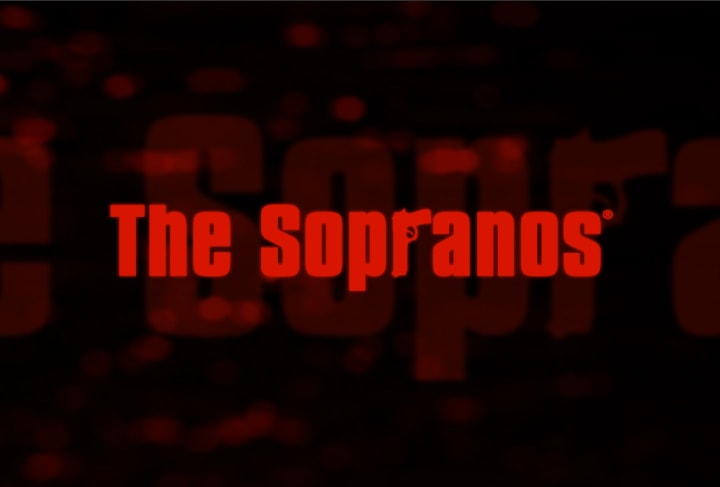
We ended up working with HBO on a series of nearly 100 commercials over two months, and even after that ended, we continued to maintain a partnership and friendship with them for over a decade.
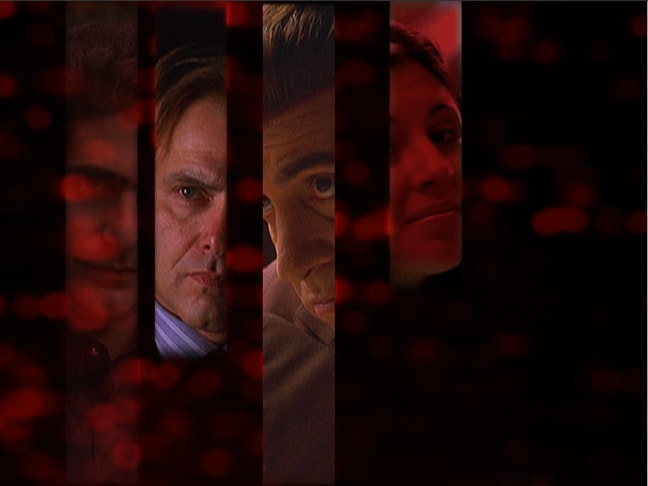
When we delivered that inaugural HBO project, we threw a massive party and invited 1,000 NYC AD agency creatives and executives to it. We even had Coney Island sideshow acts performing, a strolling magician, funhouse mirrors, and fire eaters who accidentally set off the smoke alarms. It was insane in the best way possible.
After that run of commercials with HBO, we began bringing in more broadcast and agency clients. The work fast-paced, with a one-to-two-week turnaround. It was a constant battle of working on what we currently had and trying to get more. Even when we were overloaded and busy, we continued seeking out more work. That’s how we operated for several years, working on stacks of brief projects that filled our schedules all day, every day, 24/7.
Luckily, our clients loved our work. What we were producing looked incredible, and it was done quickly and cost-effectively – something everyone could appreciate. We were bringing in more work, but that was also filling up more of our time. We needed to keep up with the increased demand, and the two of us couldn’t do that while still seeking out more clients. So, we began to expand the company.
We moved to a slightly larger office with a few editing rooms and an office to make all those sales calls in. Since the projects we were working on were consistently brief with quick turnarounds, we started hiring freelance talent to help with the design work. What we were striving for was longer-term engagements and deeper scopes. Rather than having to scramble for new projects every few weeks, the goal was to create relationships that would contract Perception for an extended period; this would give us the security to lock in a solid team by hiring permanent designers and production support.
Meeting Marvel
Remember that dream list of clients we mentioned earlier? Well, Marvel had always been at the very top of that list. We were both huge fans of comic books as kids (and still are as adults). When Marvel films started to emerge in popular culture, such as X-Men in 2000 and Spider-Man in 2002, the world was beginning to experience serious, high production value films based on these legendary characters. They were stirring a cultural revolution with these movies, and we frequently discussed how cool it would be to design a title sequence for one of their upcoming blockbusters. The only issue was it was nearly impossible to find an avenue that would get us there.
After many years of failed attempts at getting Marvel’s attention, an opportunity came out of the blue. I attended an event hosted by Carnegie Mellon University that featured alumnus Ken West, who, at the time, was Marvel’s Chief Financial Officer. Right after his presentation, I managed to find an opening to introduce myself, and we talked shop for a bit before he was pulled away to other duties. This encounter would change everything.
Ken would go on to make the initial introduction to Kevin Feige, President of Marvel Studios. After meeting many different people at Marvel, both in NYC and LA, we eventually met some of the animation team. When their animated feature Hulk vs. Wolverine was in the works, we were given a chance to show some ideas for the design of the title sequences.
With our love and knowledge of these characters, we poured all our energy into it. We visited a lab located a few hours away from us to research and delve into the science and creation of both Hulk and Wolverine; this was the basis for the theme and design of the title sequence. The lab allowed us to photograph and shoot advanced scientific equipment for our sequence, since we didn’t have much time or a budget to create this digitally.
Despite Hulk vs. Wolverine being a straight-to-DVD release, Marvel loved the commitment and detail of our work and our willingness and flexibility to create something feature quality on a small budget. So, they hired us to continue making the title sequences for their animated releases. During that period, we started to meet several Marvel team members who would go on to work in their emerging film studio – Marvel Studios.
We knew that Iron Man was in production and that Hulk was being rebooted in a new movie, and we would do anything to be part of it. Hulk was my favorite character and he was the reasons I started collecting Marvel comics as a kid. Completely unsolicited, we came up with some ideas for title sequences for each film, and in 2008 we hopped on a plane to California. We called the team at Marvel Studios to tell them we would be in the area, and we had something special to show them.
We ended up meeting Jeremy Latcham from Marvel Studios, who was incredibly gracious with his time, listening to our ideas and looking at our work. We were very excited. Up to that point, we had been mainly focused on broadcast packages for networks and a bunch of different commercials with ad agencies around town. Ultimately, we weren’t hired to design those title sequences, but in time, we would be rewarded with something even greater that would change the trajectory of Perception forever.
The Technology of Iron Man 2
In 2009, Jeremy reached out to us and asked us if we would be interested in designing some graphics for the Stark Expo keynote in Iron Man 2. Jeremy Latcham connected the look and feel of our broadcast work to a scene where Tony Stark was introducing his dad at the Stark Expo.
They were going to be using the animation live on set on a giant screen behind Robert Downey Jr. during filming. The one caveat was they needed it done in a week.
We were up to the challenge. By this point, we’d spent years in the high-paced, deadline-driven broadcast promo world. One week would be enough.
A few days later, we were on a call with Marvel Studios presenting dozens of Expo designs.
As they looked at the ideas, we heard someone in the background mention something about Tony Stark’s glass smartphone, specifically how one of our Stark Expo designs could work for this beautifully. We made a mental note.
Once the Stark Expo work was completed, we wanted to figure out a way to keep Marvel’s attention and keep the momentum going. After all these years of trying to get an opportunity with them, we didn’t want the Stark Expo Logo Animation work to be “it!” So, we came up with the idea of creating a visual treatment of Tony’s glass phone. We sent it over, and…
…didn’t hear from them for months.
After almost forgetting that we had even done it, they contacted us out of nowhere and invited us to bid on a series of VFX and graphics shots in the film – including the Stark smartphone.
What started with us working on a simple graphics package for Iron Man 2 evolved into us contributing over 125 shots for the film and designing several pieces of Stark Technology.
After the movie premiered, several film and technology blogs, such as Engadget and Gizmodo, produced major write-ups on the “cool tech and gadgetry” of Tony Stark – and the small design studio in NYC that was responsible for it all.
Suddenly Perception, a company that started out working on broadcast and commercials, was now the company behind the world’s newest (and greatest) technology movie. Iron Man 2 not only pushed us into the world of film, where we had always wanted to be but, unbeknownst to us, into the world of emerging technology.
In 2010, roughly two weeks after the premiere of Iron Man 2, we were contacted to design the interface of an upcoming mobile tablet being developed in Singapore. This project lasted for nearly two years and received glowing reviews. It was our first taste of that long-term engagement we had always dreamed of and had been chasing since the beginning.
We began receiving calls from other tech companies, and at the same time, we were starting to collaborate with Marvel Studios more frequently. Ultimately, we were moving into the realms of work that we had always wanted to go into, and we were finally able to say “no” to pitching, advertising, and broadcast work – something that a small company like us was never sure we’d have the power to do.
Perception Today
Today, we’re able to do fantastic work in the film, technology, and automotive industries. We have worked on the biggest and most groundbreaking films, such as each Marvel Studios’ Spider-Man film, Black Panther, and every Avengers movie to date.
We’ve even entered the streaming world, collaborating on shows like Loki, The Falcon and The Winter Soldier, and WandaVision, which earned us a nomination for Outstanding Main Title Design in the 2021 Emmys. In the tech world, we’ve partnered with companies such as Intel, IBM, Samsung, and Microsoft.
Something particularly incredible that happened to Perception has been the collaboration with automotive brands over the years, such as Ford, Audio, Mercedes, FCA, BMW, and GM. This division of Perception has become a team favorite due to our love for all things automotive. It’s fascinating to now be able to drive a vehicle full of interfaces, animations, and visualizations by Perception, like in the all-new GMC HUMMER EV.
We also have a larger staff, and we recently moved into a brand new space in New Jersey, just across the river from Manhattan. Our team is behind some of the most innovative designs seen both in film and the real world. We have won awards, been nominated for prestigious titles, and can see our designs bring people joy and amazement every single day. And we couldn’t be more proud of it.
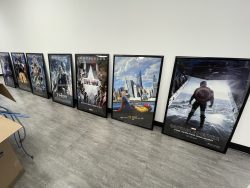

 This journey was not an easy one. We didn’t just call Marvel Studios up and land our dream job in a breeze. It took a lot of time, it took commitment, and it took a lot of doors closing in our faces.
This journey was not an easy one. We didn’t just call Marvel Studios up and land our dream job in a breeze. It took a lot of time, it took commitment, and it took a lot of doors closing in our faces.
But if we’re being honest, we’re glad that we had those doors closed in our faces. We’re glad we were hung up on. We’re glad we were told no. It showed us that you never know when your big break will come. It taught us to continually try new approaches and discover what those x-factors were that would finally lead to a ‘yes.’
The road to success is long and bumpy, but the turning point could happen at any moment – in a month, a week, or even a day. If we had let the rejection bring us down, we would never have been able to hold out for those moments of brightness that made it all worth it.
This year, we’re celebrating 20 years of Perception, and if you asked us back then where we would be today, we’re not sure we could give you an answer. We’re not even sure if we can tell you where we’ll be in another 20 years. All we can say is that we’re here, we love what we do, and we’re never going to stop doing it. The world may evolve, but we’ll evolve with it because that’s who we are. We learn. We design. We innovate. We are Perception.
Website: experienceperception.com
Twitter: @exp_perception
Instagram: experienceperception
Facebook: experienceperception
LinkedIn: perception-nyc
YouTube: perceptionnyc
ABOUT THE AUTHORS
An entrepreneur and creative leader, Jeremy Lasky started his career at R/GA after graduating from Carnegie Mellon University, where he studied Graphic Design, Architecture, and Business. For 5+ years, he led design efforts for feature films, global ad agencies, and broadcast networks. In the Fall of 2001, Lasky co-founded Perception, a cutting-edge motion graphics studio that led the revolution in creating groundbreaking design and visual effects on the desktop. Lasky leads new business strategies and shapes the company’s growth while overseeing a full-time staff of creatives and production managers.
Lasky has been a keynote speaker and presenter at Promax 2016, Disney Art Summit, Disney Creative Loop Series, Science of Team Science Conference, Biogen Technology Innovation Symposium, TV of Tomorrow Conference, and Razorfish’s Global Creative Summit. Lasky has lectured on design and guest speaker at OTIS, SCAD, Carnegie Mellon’s ETC, and NYU ITP. He’s also given presentations and workshops at some of the biggest tech giants globally, including Samsung, IBM, SpaceX, Intel, Microsoft, GE, Yahoo, Audi, Mercedes, Ford, Chrysler, Visa, and Apple.
Lasky’s work has been featured in dozens of design and industry publications, and he has garnered many of the most prestigious awards in the design world, including AIGA, The Art Director’s Club, Broadcast Design Association/Promax, CLIO, International Andy Awards, Monitor Awards, New Media Invision Awards, One Show Awards, The Charleston International Film Festival Awards, Telly Awards, and The Type Directors Club.
Twitter: @jeremylasky
Instagram: jeremy_lasky
LinkedIn: jeremylasky
Daniel Gonzalez started his career at R/GA after graduating from St. John’s University, receiving a BS in Business. For 6+ years, he led the visual effects team for feature films, global ad agencies, and broadcast networks. In the Fall of 2001, Gonzalez co-founded Perception with an R/GA colleague, Jeremy Lasky. They formed a motion graphics studio that led the revolution in creating groundbreaking design and visual effects on the desktop. Now, in its 20th year, the studio has sharpened its focus to become global experts in designing futuristic UIs for both feature films and the most powerful brands in technology. Gonzalez co-leads new business initiatives and shapes the company’s growth while overseeing a full-time staff of creatives and production managers.
Gonzalez has lectured on design and technology at OTIS, SCAD, Boeing, Carnegie Mellon’s ETC, and NYU ITP. He’s also given presentations and workshops at some of the world’s biggest tech giants, including Samsung, SpaceX, Intel, Microsoft, GE, Northrop Grumman, Audi, Mercedes, Ford, Chrysler, and Apple.
Gonzalez’s past work has been showcased on the film screen and televisions worldwide, while Perception’s work can be experienced on the big screens, in smart homes, automobiles, and mobile devices across the planet!
Twitter: @dannygonzalez89
Instagram: dannygonz1989
LinkedIn: danny-gonzalez
Studio Stories is a Motionorapher initiative created and edited by @Stuart Groves.
To tell your studio’s story, please submit your details to OOY on Motionographer.com.








